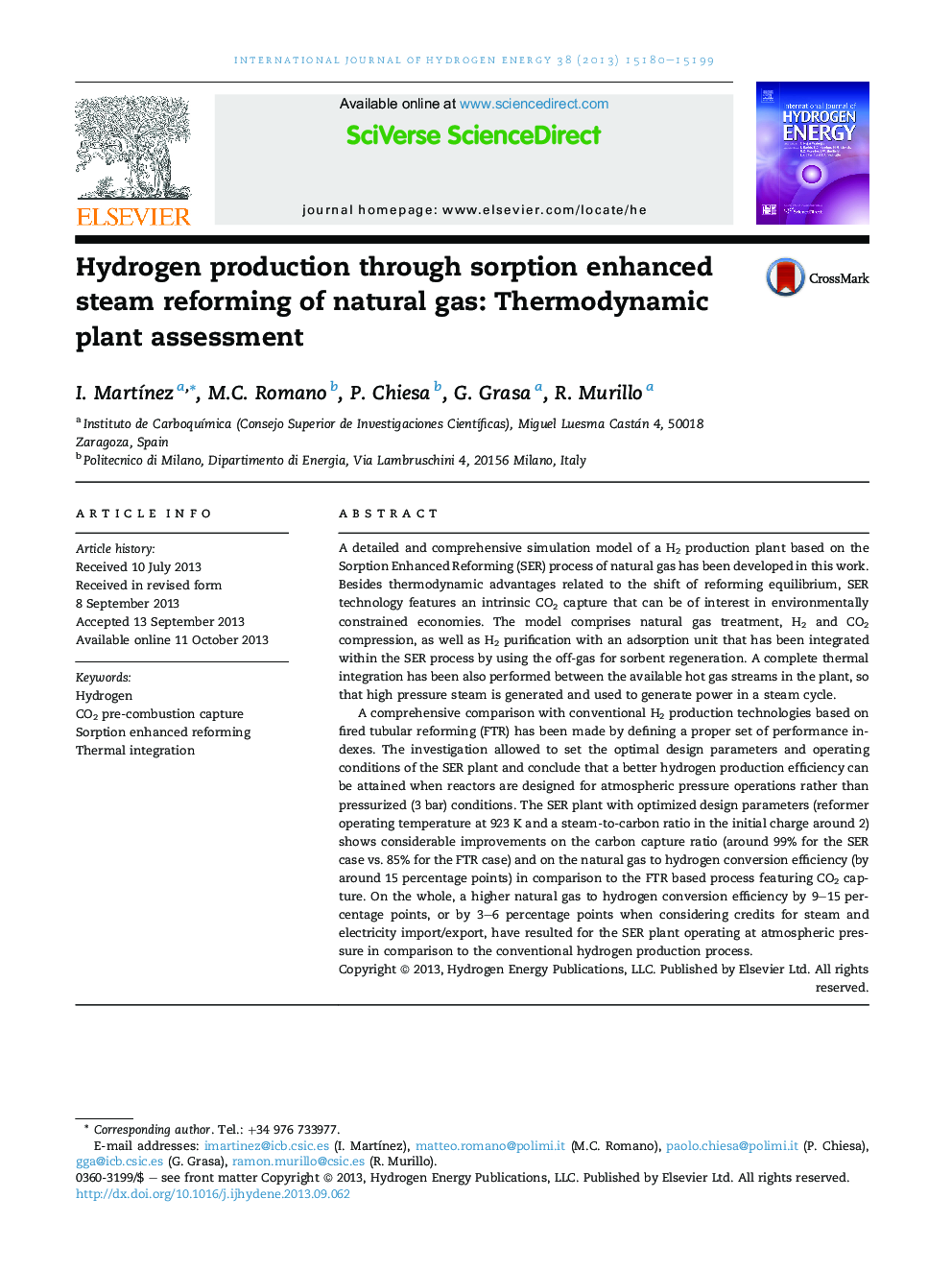| Article ID | Journal | Published Year | Pages | File Type |
|---|---|---|---|---|
| 7721032 | International Journal of Hydrogen Energy | 2013 | 20 Pages |
Abstract
A comprehensive comparison with conventional H2 production technologies based on fired tubular reforming (FTR) has been made by defining a proper set of performance indexes. The investigation allowed to set the optimal design parameters and operating conditions of the SER plant and conclude that a better hydrogen production efficiency can be attained when reactors are designed for atmospheric pressure operations rather than pressurized (3Â bar) conditions. The SER plant with optimized design parameters (reformer operating temperature at 923Â K and a steam-to-carbon ratio in the initial charge around 2) shows considerable improvements on the carbon capture ratio (around 99% for the SER case vs. 85% for the FTR case) and on the natural gas to hydrogen conversion efficiency (by around 15 percentage points) in comparison to the FTR based process featuring CO2 capture. On the whole, a higher natural gas to hydrogen conversion efficiency by 9-15 percentage points, or by 3-6 percentage points when considering credits for steam and electricity import/export, have resulted for the SER plant operating at atmospheric pressure in comparison to the conventional hydrogen production process.
Related Topics
Physical Sciences and Engineering
Chemistry
Electrochemistry
Authors
I. MartÃnez, M.C. Romano, P. Chiesa, G. Grasa, R. Murillo,
